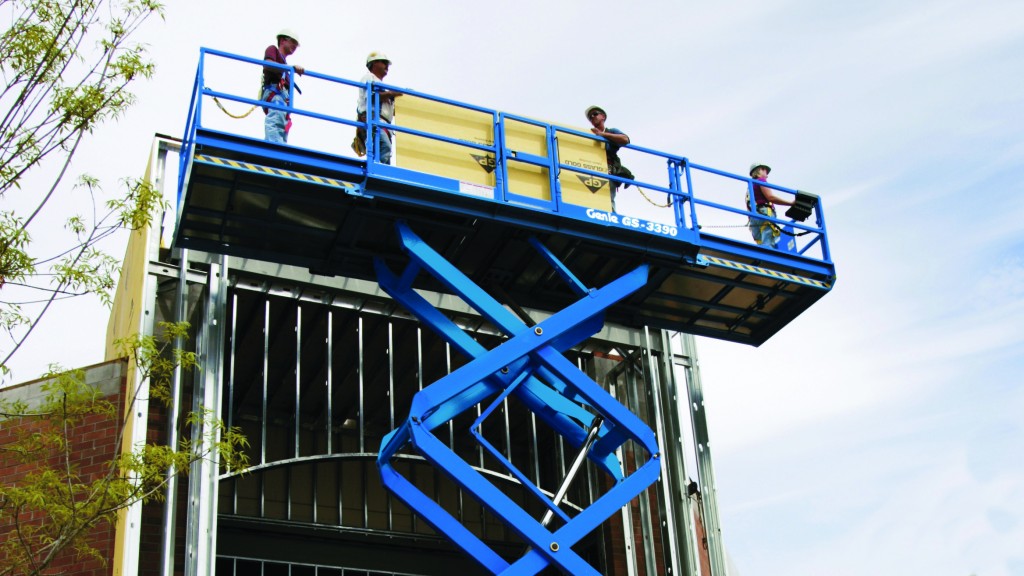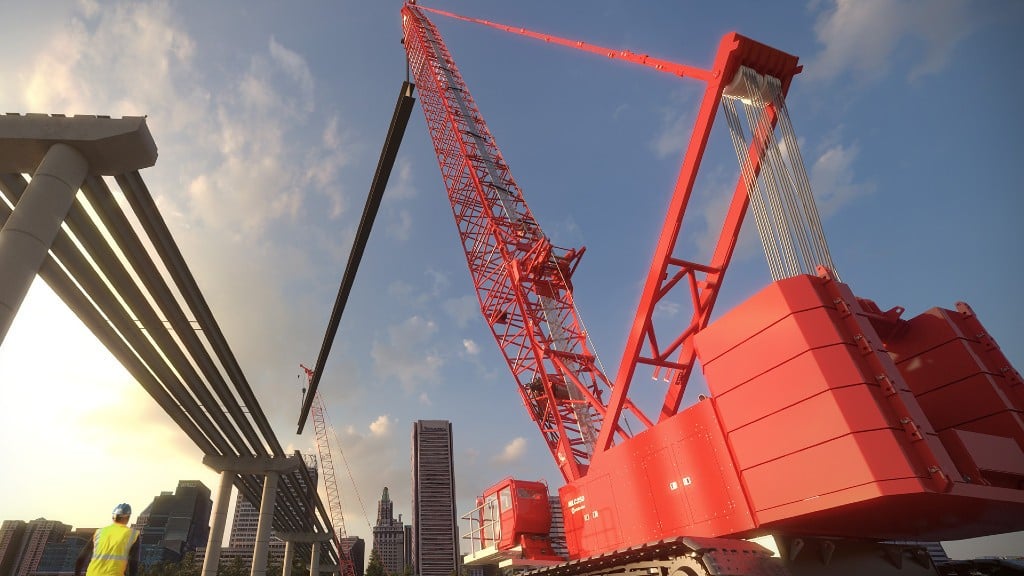
Prior to the introduction of mobile elevating work platforms (MEWPs) in the 1970s, construction industry professionals relied almost exclusively on ladders and scaffolding to access major work at height projects. In the decades since their introduction, MEWPs have become increasingly common, but the question still surfaces: is a MEWP or scaffolding the right choice for my jobsite?
MEWPs have a number of advantages over scaffolding systems to improve jobsite safety, access and productivity.
Time and workload management
The time and resources allotted to a given project will be a primary factor when deciding between MEWPs or scaffolding. MEWPs allow for most jobs to be completed in the same or less time, with fewer workers than scaffolding requires.
Once offloaded at the jobsite and inspected in accordance with the operator's manual, a self-propelled MEWP can be driven to the worksite to begin work. Scaffolding must be manually transported to the worksite after curbside delivery, and may require coordination with a third party that specializes in the erecting/dismantling of scaffolding systems. After installation on the jobsite, a worker on scaffolding must climb up to the desired work platform, carrying or hoisting his or her materials and tools. MEWPs, such as scissor lifts and boom lifts, provide large platforms designed to transport workers, their tools and their supplies to platform heights up to 180 feet in under six minutes.
Workload management is crucial to reduce worker fatigue and improve productivity. Most scaffolding systems will incorporate a ladder for worker access, which presents a fall hazard and is a significant contributor to worker fatigue. Additionally, standard scaffold section heights may not allow the work platform to be positioned at the desired height, necessitating crouching or reaching to the working surface. Interior work with rolling scaffolding will not only require frequent climbing and repositioning of the scaffolding but also disassembly to move between rooms through doorways.
MEWPs allow the operator to step into the platform and, with proportional lift control, allow the operator to position the platform exactly where they need it, so they can minimize the strain and fatigue associated with crouching and reaching. Most scissors and boom lifts can be driven at maximum platform height to allow the worker to continue to the next working surface without spending time returning to the stowed position. Additionally, many small slab scissors and personnel lifts are capable of fitting through standard doorways, to expedite work in interior applications.
Jobsite access
Jobsites can range from concrete slab surfaces to rough terrain conditions, and there is a MEWP to choose from for everything in between. A major benefit of self-propelled, rough-terrain mobile elevating work platforms is their ability to traverse terrain that may be out of reach of delivery vehicles. Additionally, small slab scissors and manually propelled vertical mast lifts have compact stowed dimensions, enabling quick and easy access to interior applications with dimensional restrictions. Telescopic boom lifts, which are capable of significant outreach, can enable workers to reach worksites from up to 90 feet away. This outreach is critical in applications where surface conditions may otherwise prevent the use of scaffolding or MEWPs from directly below. In applications where there is an obstacle preventing direct access to the worksite, articulated boom lifts can provide up and over clearances of over 75 feet.
Large scaffold system installations often become a fixture at the jobsite, requiring ties into the structure for lateral stability. MEWPs, on the other hand, are self-contained and designed for productivity, allowing the workers to precisely position the chassis and platform exactly where they need it. This flexible positioning is particularly beneficial in public or commercial spaces, where the jobsite is isolated to the footprint of the MEWP. The MEWP can later be repositioned away from the space and locked out, removing any interference with day-to-day operations. Semi-permanent scaffolding installations may prohibit or obstruct entrance even after work has been completed for the day.
Safety at height
The Occupational and Safety Health Administration (OSHA) has identified falls as one of the big four construction hazards. It is critical that the installation, inspection, operating and maintenance procedures set forth by the MEWP or scaffolding manufacturer are followed by properly trained, competent and/or qualified personnel. MEWPs provide guardrail systems as a means of fall prevention that move with the MEWP operator, occupants, tools and materials all the way to the worksite. Lanyard attachment points are provided to enable the MEWP occupants to tie off with a fall restraint or fall arrest system as appropriate (or as required), further ensuring workers can complete their job and return home safely.
Michael Flanagan is Genie product manager at Terex AWP.



